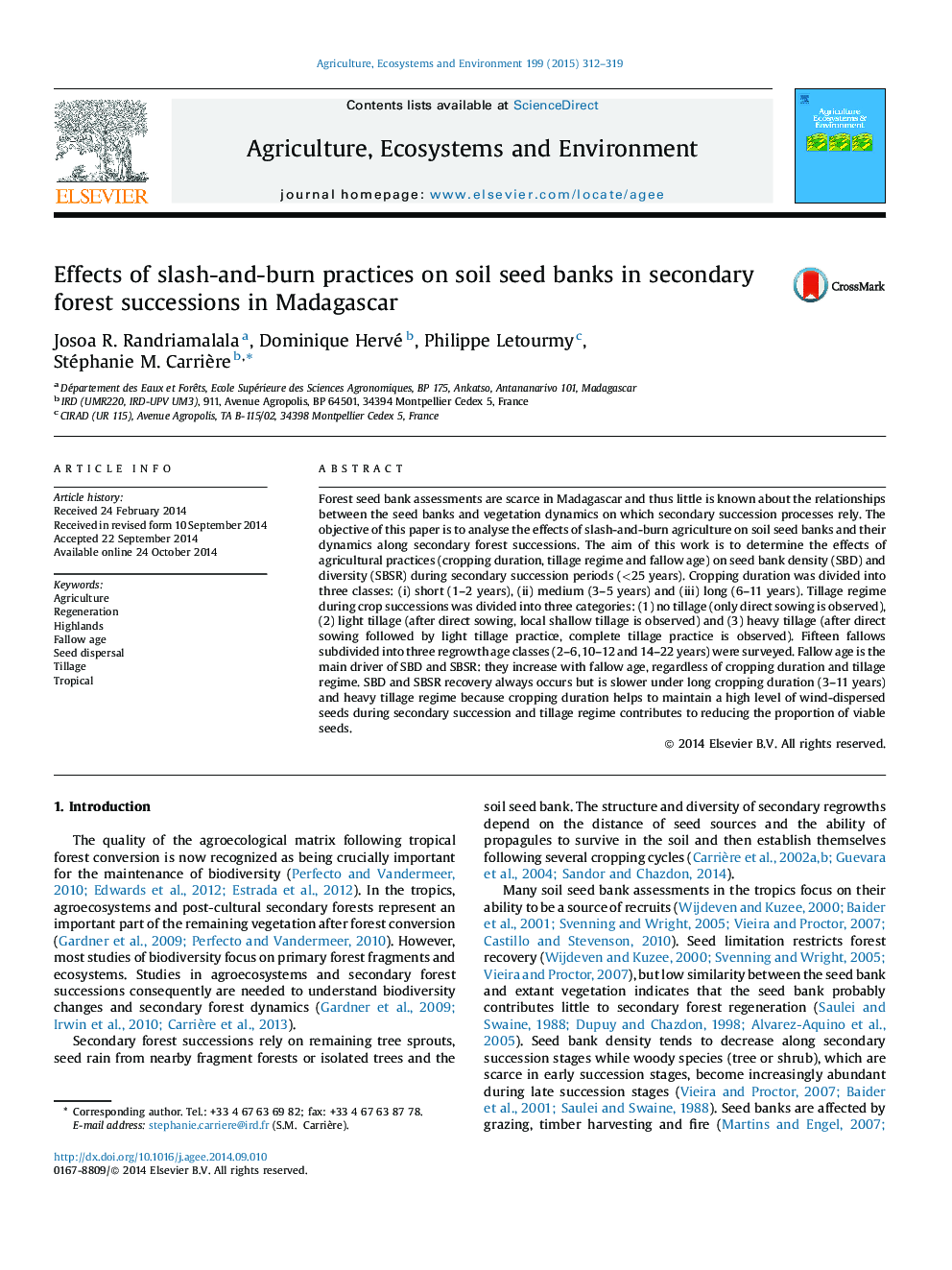| کد مقاله | کد نشریه | سال انتشار | مقاله انگلیسی | نسخه تمام متن |
|---|---|---|---|---|
| 2413870 | 1552053 | 2015 | 8 صفحه PDF | دانلود رایگان |
• This paper aims to analyse the effects of agriculture practices on soil seed bank dynamics.
• Fifteen fallows subdivided into three age classes (from 2 to 22 years) were surveyed.
• Seed bank density and seed bank species richness increase with fallow age.
• Seed bank recovery is always slower under long cropping duration and heavy tillage.
• Tillage regime contributes to reducing the proportion of viable seeds.
Forest seed bank assessments are scarce in Madagascar and thus little is known about the relationships between the seed banks and vegetation dynamics on which secondary succession processes rely. The objective of this paper is to analyse the effects of slash-and-burn agriculture on soil seed banks and their dynamics along secondary forest successions. The aim of this work is to determine the effects of agricultural practices (cropping duration, tillage regime and fallow age) on seed bank density (SBD) and diversity (SBSR) during secondary succession periods (<25 years). Cropping duration was divided into three classes: (i) short (1–2 years), (ii) medium (3–5 years) and (iii) long (6–11 years). Tillage regime during crop successions was divided into three categories: (1) no tillage (only direct sowing is observed), (2) light tillage (after direct sowing, local shallow tillage is observed) and (3) heavy tillage (after direct sowing followed by light tillage practice, complete tillage practice is observed). Fifteen fallows subdivided into three regrowth age classes (2–6, 10–12 and 14–22 years) were surveyed. Fallow age is the main driver of SBD and SBSR: they increase with fallow age, regardless of cropping duration and tillage regime. SBD and SBSR recovery always occurs but is slower under long cropping duration (3–11 years) and heavy tillage regime because cropping duration helps to maintain a high level of wind-dispersed seeds during secondary succession and tillage regime contributes to reducing the proportion of viable seeds.
Journal: Agriculture, Ecosystems & Environment - Volume 199, 1 January 2015, Pages 312–319
